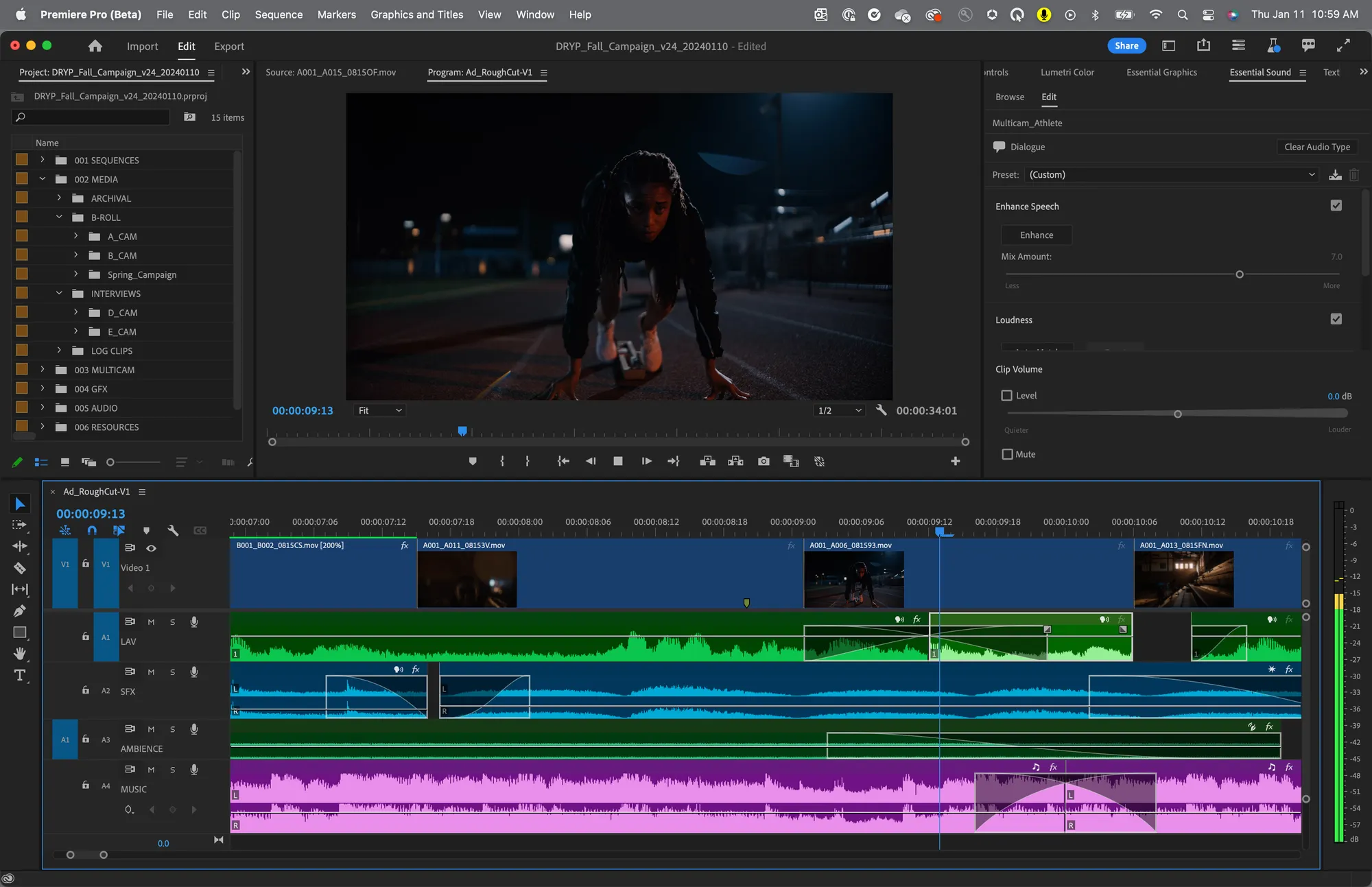Avid Media Composer
Avid Media Composer is a long-standing NLE used widely in film, television, and broadcast. Known for its robust media management, collaborative workflows, and precise editing tools, it remains a go-to for large-scale productions.
Avid Media Composer is a professional video editing system known for its deep toolset and long-standing presence in high-end post-production. Used extensively in film studios, TV networks, and broadcast environments, it offers powerful timeline control, media bin management, and support for collaborative workflows across teams. Avid excels in handling long-form and multi-cam projects, with robust tools for trimming, syncing, and delivering content at scale.
What It Does Best
Precision Editing: Advanced timeline tools for frame-accurate cutting, trimming, and audio syncing.
Media Management: Scalable bin and project organization for large, complex assets and sequences.
Collaborative Workflows: Supports multi-user environments via Avid Nexis and MediaCentral integration.
Who It’s For
Film & TV Editors: Cutting feature films, series, and long-form content with studio-grade tools.
Post-Production Houses: Teams working in broadcast and enterprise media pipelines.
Experienced Editors: Users familiar with NLEs looking for control, speed, and workflow customization.
What Makes It Unique
Media Composer is built for large-scale editorial workflows with demanding requirements. Its project management, audio control, and Avid DNx codec support make it well-suited for professional pipelines that require stability, shared storage, and broadcast compliance.
Before You Start
Available for Windows and macOS with both subscription and free limited versions (Media Composer | First).
Requires more technical setup than beginner-friendly editors; best used on well-equipped systems.
Heavily keyboard-driven interface with a learning curve, especially for new users outside the broadcast space.
Final Thoughts
Avid Media Composer continues to serve as a foundational tool in the professional editing world. Its stability, media handling, and industry-standard features make it a strong fit for collaborative and long-form editorial work.










